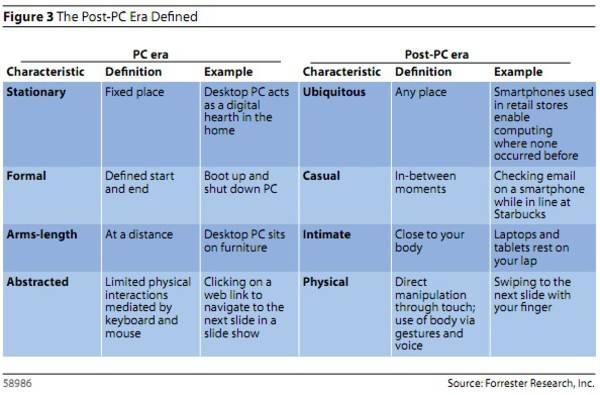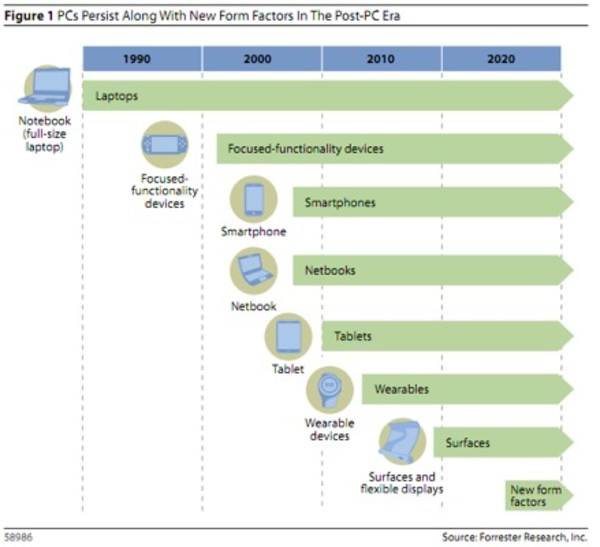In a report released today, research firm Forrester attempts to define exactly what this “Post PC” era actually is. Foremost, it does not mean “absence of” PCs, but a whole new computing paradigm that will fold into existing technology and lead us to the computers of tomorrow.

Forrester came up with several guidelines and principles that will help manufacturers, developers and consumers navigate the technological waters that are stretching to the horizon. The research firm defines Post PC as, “a social and technological phenomenon in which computing experiences become ubiquitous, casual, intimate, and physical.”
Post PC is predicated around mobile computing. The progressive factors that signal the evolution are:
- computing going from stationary to ubiquitous
- computers becoming more casual than formal
- computers going from arms length to intimate
- content manipulation is transforming from abstracted (mouse and keyboard on screen) to physical (touching the screen)

These shifts have been made possible by jumps in technology that were hard to imagine during the heyday of the PC, 10 or so years ago. Computers are smaller and more powerful. Imagine your first IBM computer and that big box it called a hard drive and then look at an iPad. Flash and NAND memory are the biggest culprits behind the slimming of computing. Wi-Fi and 3G/4G permit smaller computers to be useful wherever people want to take them and cloud computing allows content creation and distribution to be accessed from anywhere.
Forrester recommends three stages that developers and manufacturers should take to stay ahead of the Post PC curve. The first is to augment existing products to fit the new paradigm, an example being Internet-aware printers than can print content sent from anywhere. The next stage would be to launch forward-thinking products – the iPad and Microsoft’s Kinect fit here – that lead consumers to a type of computing they have never seen before. New technologies and new ways of interacting with devices equals new consumer habits and expectations.

While companies are transitioning, Forrester says to invest in the infrastructure of tomorrow. Create sensors that make possible the Internet of Things where everything is connected. Make rooms, walls and surfaces that are completely interactive. Microsoft and Kinect might have the lead in this department as the room of the future will know when you step in and will be able to act corresponding to your movements. Transition today, dream tomorrow and then go out and build it.





















